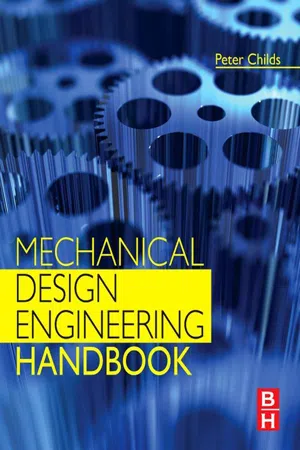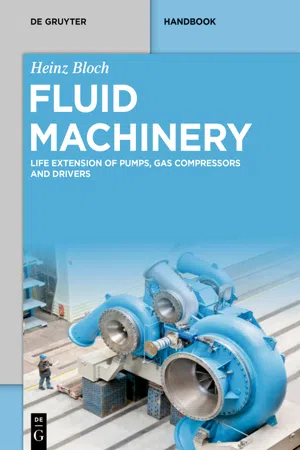Technology & Engineering
Seal Engineering
Seal engineering involves the design and development of seals used in various mechanical systems to prevent leakage or contamination. This field encompasses the selection of appropriate materials, the study of sealing mechanisms, and the optimization of seal performance. Engineers in this discipline work to ensure that seals effectively maintain the integrity and functionality of the systems they are integrated into.
Written by Perlego with AI-assistance
Related key terms
3 Key excerpts on "Seal Engineering"
- eBook - ePub
- Peter Childs(Author)
- 2013(Publication Date)
- Butterworth-Heinemann(Publisher)
Figure 4.10 .Figure 4.10 Piston ring seals.There are many types of seals, but they can generally be classified as either static or dynamic depending on whether relative movement is involved. Many static seals involve the use of a gasket or sealing material, such as an elastomer. These are widely available from specialist suppliers, and the task facing the designer is the selection of appropriate materials for the application. Some dynamic seals are also commercially available, such as radial lip seals and mechanical face seals. However, there is not the level of standardization in shaft design. In addition, the range of possible applications is seemingly infinite with differing pressure ratios and fluids being sealed. As a result, the range of seal geometries required is too extensive to warrant an original equipment manufacturer designing or stocking a wide number of seal sizes and types. Instead, many dynamic seals are designed fit-for-purpose. Typical considerations in the selection and design of seals include the nature of the fluid or particulates to be contained, the differential pressure, the nature of any relative motion between components, the level of sealing required, operating conditions, life expectancy, and total costs. Seals are presented in greater detail in Chapter 14 .4.6 Springs
Springs are flexible elements used to exert force or torque and store energy. The force exerted by a spring can be a linear push or pull, or a radial force similar to that of a rubber band around a roll of paper. Alternatively, a spring can be configured to produce a torque with applications including door closers. Springs store energy when they are deformed and return energy when the force that is causing the deflection is removed. A further type of spring is the power spring, or spring motor, which once wound up can dissipate energy at a steady pace. - eBook - ePub
- Dick Jeffrey(Author)
- 2013(Publication Date)
- Routledge(Publisher)
Chapter 9SEALSSeals are used to prevent the leakage of liquids, solids and gases from items of rotating machinery and other types of industrial equipment and to stop dirt and other sources of external contamination from entering a machine or piping system.As industrial equipment has become more sophisticated the conditions under which seals have to operate have become more arduous and sealing technology has developed rapidly in the last twenty years in order to meet these developing needs. The demands of the aerospace industry have had a particularly strong influence on the advancement of seal technology.Despite the sophisticated developments that have taken place, traditional seal designs are still found in the vast majority of industrial applications. Before examining particular types of seals it is useful to consider how seals can be classified according to their operating characteristics and application.The most fundamental distinction to be understood is the difference between static seals and dynamic seals. Static seals are those used for sealing surfaces between which there is no relative motion whereas dynamic seals are used where relative motion occurs. Static seals are often referred to as joints whereas dynamic seals may be referred to as packing or gland packing.Dynamic seals can be further grouped into two main categories, contact seals where the sealing element rubs against a mating surface under load, and clearance seals which operate with positive clearance between the sealing surfaces.The family tree of seals (Fig. 9-1 ) shows the common groups of seals found in rotating machines.Fig. 9-1 Classification of seals.9.1 GasketsA gasket is a static seal used to contain liquids, solids and gases in all types of machinery, containers and piping systems and may operate under a wide variety of service conditions. Gaskets are normally located between rigid and usually metallic sealing faces. - eBook - ePub
Fluid Machinery
Life Extension of Pumps, Gas Compressors and Drivers
- Heinz Bloch(Author)
- 2020(Publication Date)
- De Gruyter(Publisher)
Chapter 6 Mechanical seal selection facilitated by applying principles of machinery quality assessmentThe transition from the previous chapter is easy: Both Chapters 5 and 6 deal with sealing matters, and, a few exceptions aside, fluid seals are generally the weakest link in the reliability chain for fluid machines. However, they will no longer be the weakest link if seal materials, configurations, and flush plans are chosen with high-quality and long-term reliability in mind. Accordingly, we note that MQA (Machinery Quality Assessment) is successfully used to also obtain high quality, reliability, and long-term availability from mechanical seals.Mechanical seals represent critically important components in all fluid machines. In pumps there are many different seal categories. There are well over a thousand different fluids to be sealed, and fluid temperatures range from deep cryogenic to unusually hot. To do the job most effectively, leading seal manufacturers select optimized materials and material combinations, and advocate different flush applications and flush media, propose double and tandem seal arrangements, and much more. Mechanical seal selection makes a compelling case for involving experts in the selection and upgrading processes. That said, reliability professionals should perhaps resist the temptation of becoming experts in sealing technology; instead, they should aim to be resourceful and benefit from the experience of subject matter experts (SMEs). Of course, reliability professionals must be careful not to take undue advantage of these experts by expecting them to perform lots of consulting work without compensation.6.1 Zeroing in on best available technology
Using mechanical seals as our example, we want to next explain how one would obtain the product that best meets one’s purpose. As a general rule, the single-sourcing of any critical component should be discouraged. Instead, and if possible, two to four competent suppliers or cooperative manufacturers should be invited to offer superior mechanical seals, propose the right rolling element bearings, offer only service-optimized gaskets, and so forth. Successful networking among one’s peers in order to be well informed will ultimately benefit both seller and buyer. We hope to demonstrate the entire concept in this example; it deals with identifying superior mechanical seals for a difficult process pump in an existing plant.
Index pages curate the most relevant extracts from our library of academic textbooks. They’ve been created using an in-house natural language model (NLM), each adding context and meaning to key research topics.


